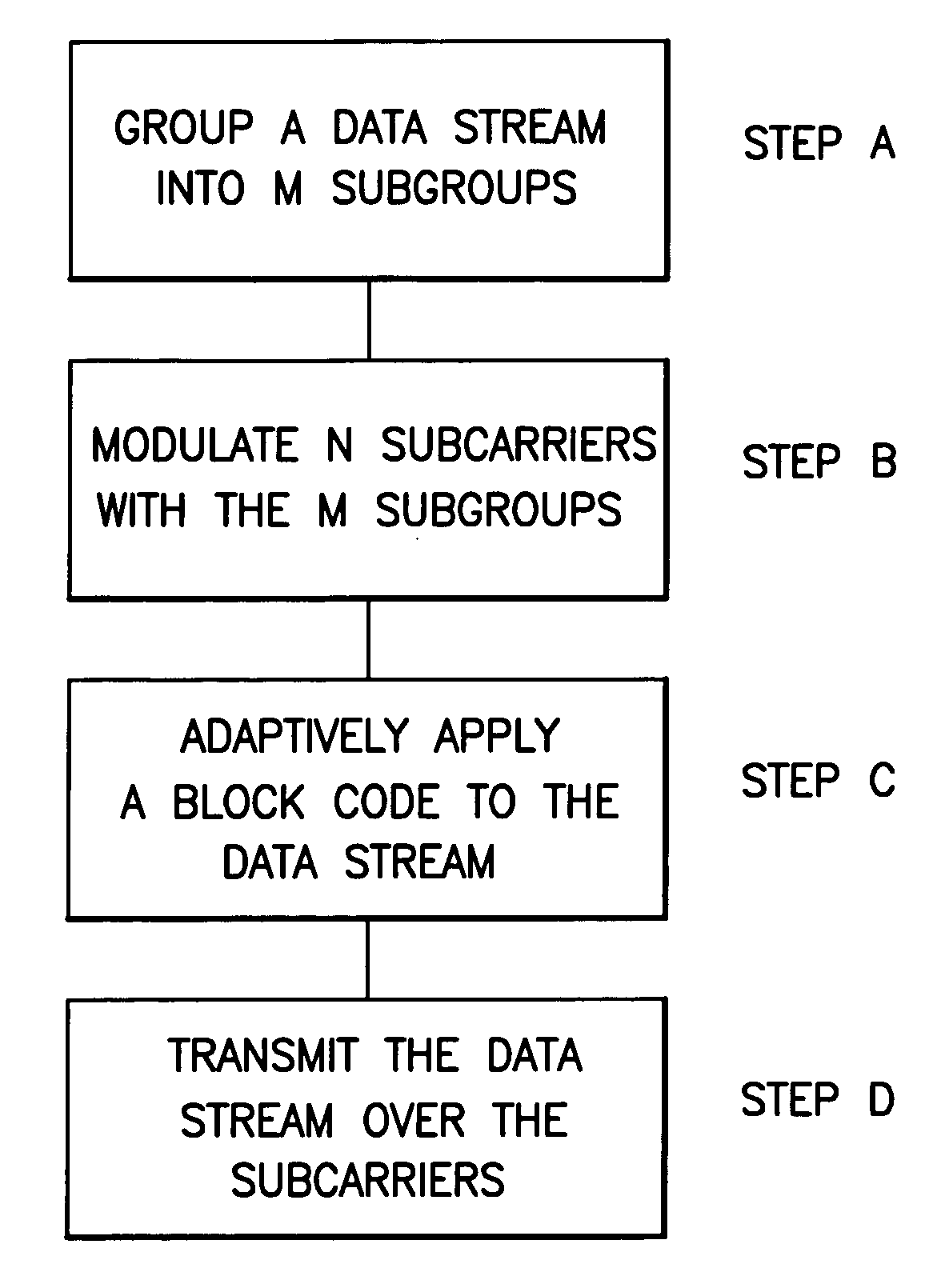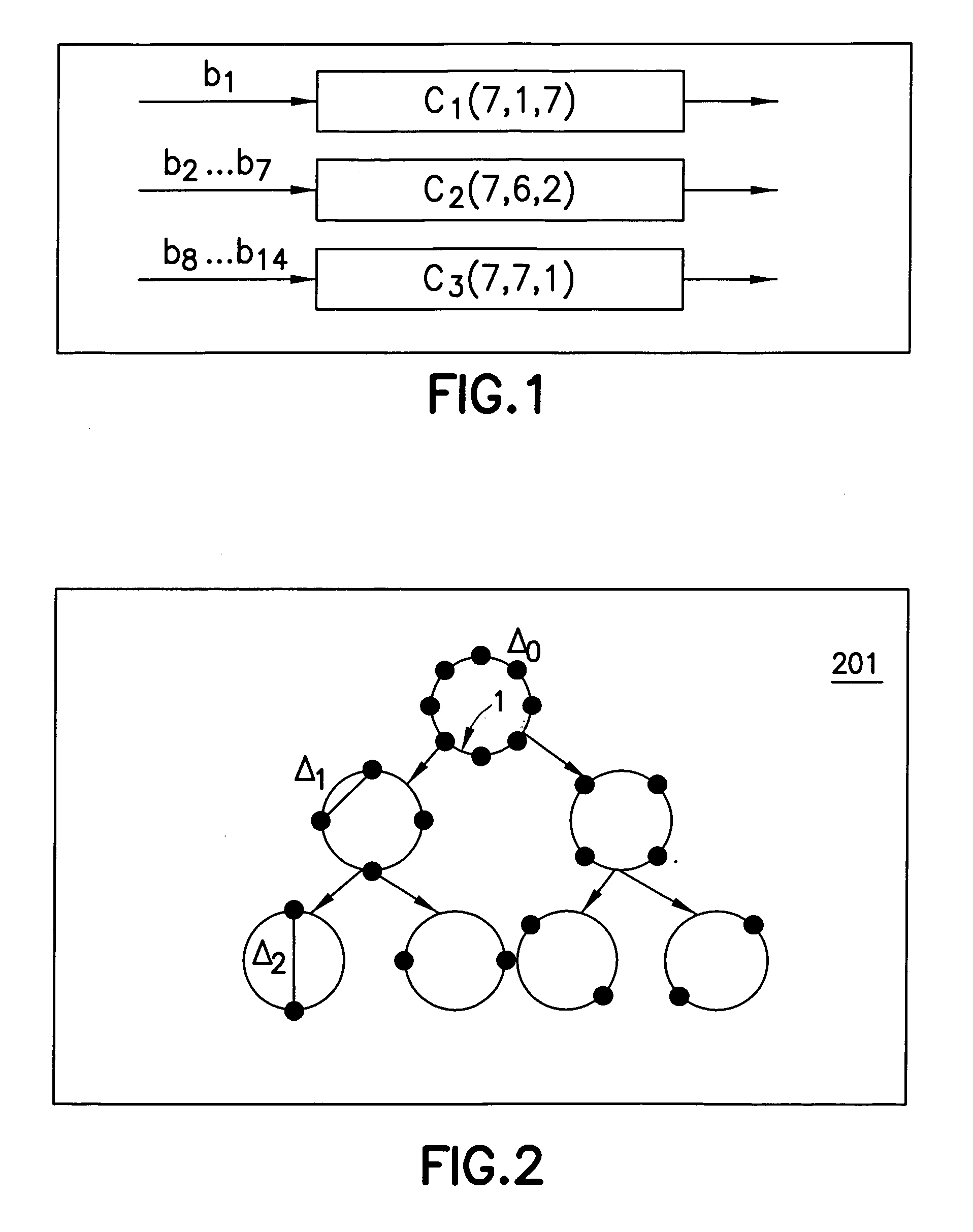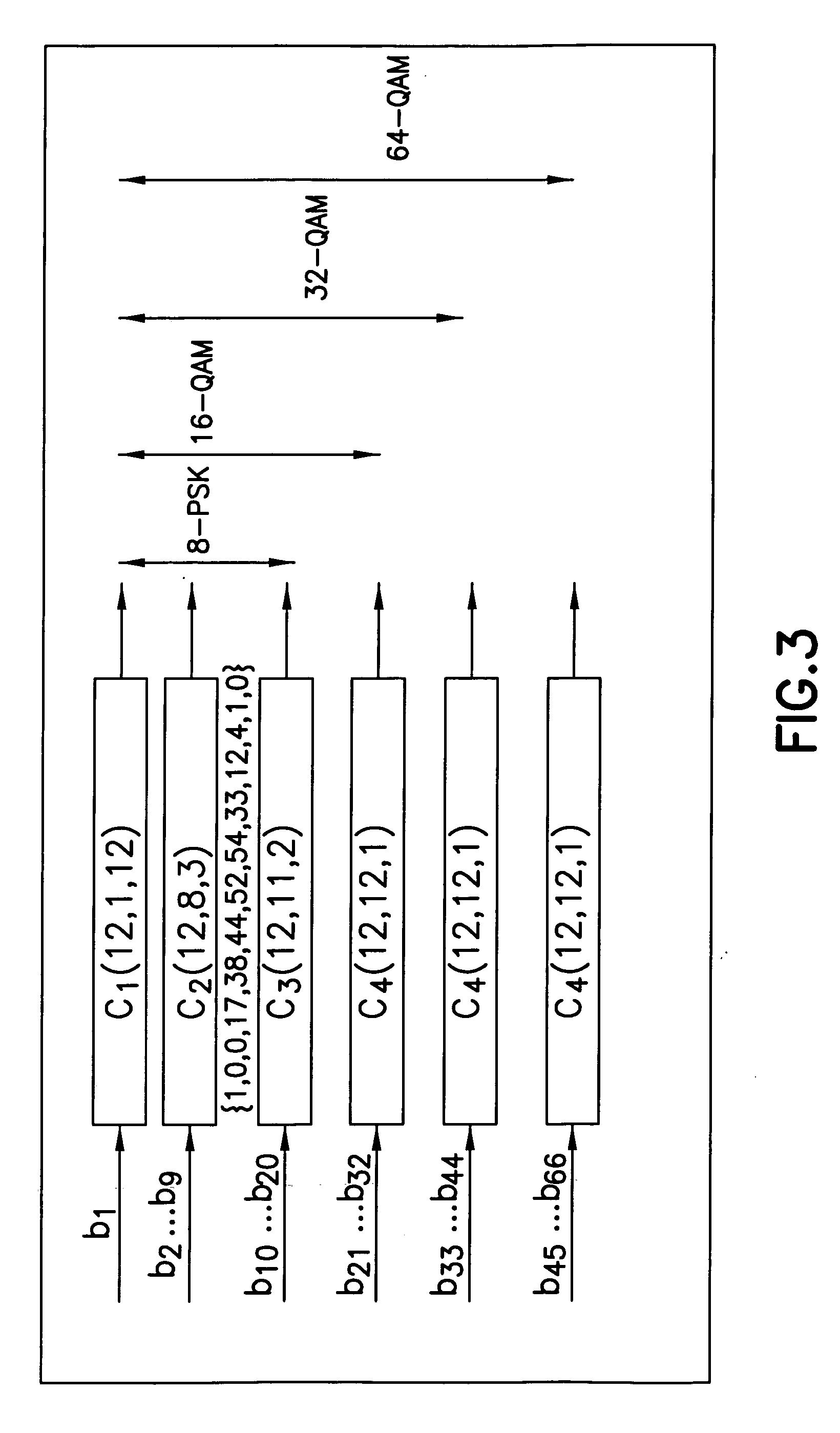Adaptive multilevel block coded modulation for OFDM systems
a multi-level block coded and modulation technology, applied in the field of wireless transmission systems, can solve the problem that the optimal codes of gaussian channels are not always efficient on fading channels
- Summary
- Abstract
- Description
- Claims
- Application Information
AI Technical Summary
Problems solved by technology
Method used
Image
Examples
Embodiment Construction
[0034] Exemplary and non-limiting embodiments of the invention provide a method of coding in an OFDM scheme, in which the signal constellation is partitioned into a set of subcarriers that are modulated with a block coding structure composed of a repetition code, a variable length Hamming code and a set of uncoded (spare) bits. Exemplary embodiments of the invention teach adaptively changing the modulation of subcarriers in response to changing channel conditions. Further exemplary embodiments of the invention teach increasing the code rate for subcarriers with higher signal gains and decreasing the code rate for subcarriers with lower signal gains as well as selecting the lower level codes in order to maximize product distance.
[0035] In general, having an exact knowledge of a channel at a transmitter allows one to optimally, or nearly optimally, adapt the rate and the power given the average transmit power constraint. Specifically, each subcarrier can be modulated with a different...
PUM
 Login to View More
Login to View More Abstract
Description
Claims
Application Information
 Login to View More
Login to View More - R&D
- Intellectual Property
- Life Sciences
- Materials
- Tech Scout
- Unparalleled Data Quality
- Higher Quality Content
- 60% Fewer Hallucinations
Browse by: Latest US Patents, China's latest patents, Technical Efficacy Thesaurus, Application Domain, Technology Topic, Popular Technical Reports.
© 2025 PatSnap. All rights reserved.Legal|Privacy policy|Modern Slavery Act Transparency Statement|Sitemap|About US| Contact US: help@patsnap.com



